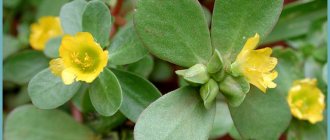Mirabilis is a night beauty, we also call it “nochka”. This plant is familiar to many from childhood. It is loved for its ease of cultivation, beautiful flowering and fragrant aroma that fills the garden in calm weather. Growing mirabilisan is not difficult, even a novice gardener can handle it. And so that it is a joy and does not cause trouble, we will tell you all the details of planting and caring for mirabilis.
Description 2. Growing mirabilis in open ground 3. Seedling method 3.1. How to sow seeds 3.2. How to care for seedlings 4. Care in open ground 5. Nochka varieties
Photo: Even a novice gardener can grow a plant.
Characteristic
A perennial shrub with thick roots in the form of tubers. In our climate, it does not tolerate winter cold, so Night Beauty is grown annually from seeds. There are about 60 species of shrubs in nature, Mirabilis Jalapa and Mirabilis Himalayan are the most common and loved by gardeners. Plants do not require special care and are little susceptible to pest attacks.
Crown
The shape of the shrub is elongated and rounded, reaching a height of 30 to 80 cm. The stems are erect, densely covered with branches, becoming lignified in the lower part. The bark is reddish in color, the leaves are opposite, on petioles, they are elongated, smooth, green.
Flowers
The flowers are funnel-shaped, with a large calyx (up to 2.5 cm in diameter) and a long tube (see photo). The color can be two-color or one-color, always bright - crimson, purple, orange, white, red, yellow. Corymbose inflorescences are collected at the apex.
Peculiarities
Mirabilis is native to North America. The flowers open in the evening and fade very quickly, after a few hours. They are pollinated by hawkmoths - butterflies that fly at night. Withered flowers are replaced by new ones, this continues throughout the season, until autumn. The aroma is rich, very pleasant, tropical.
The fruits of the plant are dense capsules with one achene. Dark brown, ribbed fruits can be stored for up to 3-5 years, maintaining their viability.
Application
Landscape designers use Mirabilis as a low decorative hedge, framing paths and alleys. Tall varieties are well suited as background filler in mixborders.
The plant is used to decorate terraces and balconies, planted in deep, large pots. The bushes look equally good in single or group plantings next to marigolds, zinnias, and daisies.
Use in landscape design
Usually, low-growing mirabilis flowers are planted in flower beds in small groups of 4–6 bushes. The same varieties are suitable for growing on balconies, loggias in pots and flowerpots. To create beautiful compositions, mixborders and hedges, it is better to choose tall plant species. You can decorate the paths with a variety such as Yalapa, which does not exceed 70 cm in height.
The bushes look great in single plantings, but some gardeners prefer to combine them with other crops and create flower arrangements.
Suitable neighbors for a night beauty:
- petunias;
- chamomile;
- cereals;
- carnation;
- nigella;
- marigold;
- ferns.
However, you can form a flower bed from any flowers and create a unique combination of different colors and shapes. You can get ideas from photos of mirabilis flowers with other flowering plants.
It should be borne in mind that the night beauty, depending on the species, opens its buds only in the evening or late at night. Therefore, when forming a flower bed with “daytime” crops, you can use the bushes as a green base for the background. Read here what other plants bloom at night.
It is also important to choose the right place to plant the night beauty flower.
In a shaded place, the bushes will stretch and lose their decorative qualities.
Common varieties
Flower growers willingly grow Mirabilis multiflorum - its inflorescences are formed by the axils of the leaves, each bell-shaped veil contains 5-6 large purple flowers. The round-leaved species of Night Beauty is compact, only up to 30 cm in height and is interesting with the oval shape of the leaves. The most famous plant species:
- Red lollipop - distinguished by large (diameter 6 cm) bright red flowers, the height of the bush is about 1 m;
- Ti Time Red - bushes for medium-height balconies with deep pink flowers;
- Iolanta - branched bushes up to 0.5 m, flowers of unusual color - with streaks;
- Ti time Fomyula Mix - variegated inflorescences are very attractive, neat spherical bushes, 70-90 cm.
Mirabilis - description and features
The genus Mirabilis includes almost 50 plant species. Among them there are also annuals, but perennials are more common. In its homeland, the bush lives for 4–5 years, but in the Russian climate it is cultivated as a one-year plant. As a rule, the night beauty does not survive the winter cold even under cover.
This is interesting. Mirabilis is translated from Latin as “amazing”, “extraordinary” and, I must say, fully justifies the name - the flower is truly unusual.
The stems are straight or creeping, often pubescent, sticky in places, quickly overgrown with many side shoots and form a spreading bush with a diameter of 50–80 cm. Opposite bright green, elegant, elongated leaves grow on the branches. The central root of the plant is taprooted and long. Small tubers with a supply of nutrients develop around it.
Another feature of Mirabilis is its night flowering. Delicate, silky gramophones open after lunch and close with the first rays of the sun. For this reason the flower is called the beauty of the night.
Until the morning, mirabilis fills everything around with a strong and sweet aroma, creating the atmosphere of a tropical night.
The structure of the flower itself is amazing. In fact, there is none. And what we take for a flower is actually a calyx, smoothly flowing into a narrow tube with petals. In the depths of the corolla there is sweet nectar, which hummingbirds and large moths like to feast on in their homeland.
Mirabilis is a self-pollinating plant. The process of pollen transfer occurs during the day, in closed flowers. At the end of autumn, spherical fruits with a keel, containing one seed each, ripen in their place.
Planting and maintenance conditions
Mirabilis is a sun-loving shrub. In open ground it grows well even with minimal care.
Lighting and location
For planting, choose well-lit, warm, warm places, perhaps with light partial shade. Lowlands are not suitable, nor are constantly wet areas with heavy, poor soils. The plant requires a lot of free space because the root system is superficial. The night beauty will reclaim the land, taking it away from neighboring plants if the plantings are too crowded.
Temperature
Mirabilis loves warmth and does not grow well if the temperature drops below +15°C. Optimal mode +22, +28°С. In the southern regions, the shrub winters well when the minimum value does not fall below +5°C. In areas with a harsh climate, tubers are dug up in the fall and stored until spring, like dahlias.
Humidity
The night beauty blooms around the clock on cloudy days and is not afraid of precipitation and drafts. Enclosed spaces must be ventilated; air stagnation should not be allowed on verandas and glazed balconies. On hot days, spraying the leaves will help the bush bloom fully.
Priming
Dense soils with a lack of drainage are not suitable for the full growth and development of Mirabilis. Severe acidification will also negatively affect the plant. Select fertile areas with deep, clayey, limestone soil.
What does "Night Beauty" look like?
The herbaceous flower is an annual in temperate climates, but at home in South America it is a long-lived flower that can live in one place for 4-5 years. Despite its tropical origin, it is not at all capricious to conditions and location, it even adapts to poor soils, but then its flowering is more modest.
In the temperate climates of Europe and Russia, the species Mirabilis yalapa, which translates to “amazing” and “yalapa”, is where this variety is grown in the Americas. Known simply as "night beauty" or "night dawn", it blooms from dusk to dawn, filling the garden with colorful bells and attracting butterflies and moths.
Appearance
It branches densely and reaches a height of 30-80 cm, forming a lush thicket with abundant buds. The bushes are large, massive and, with proper nutrition, alive. The shoots are straight, reddish, woody and thickened in the root zone. The leaves are ovate, opposite, pointed at the ends; the surface is smooth, lush green, the veins inside are clearly visible. The root system is strong, bulbous.
The flowers are medium-sized, up to 25 mm in diameter, have the shape of a gramophone or funnel, and consist of five petals fused at the base; the flower tube is narrow and long. The buds close tightly during the day and open in the evening, blooming throughout the night until dawn. The inflorescences are bright and fragrant.
This species is characterized by white, scarlet, yellow or crimson coloring, but there is a peculiarity of creating flowers of different shades on one bush, even mixed and two-colored. The fruits are black, very dense, resembling nuts or barrels up to 0.5 cm long. Seed germination is good; The shelf life of planting material is up to 3-4 years.
The flower is self-pollinating, occurring during the day when the buds close. Spotting and double coloring are caused by the phenomenon of incomplete dominance of genes and are characteristic only of Mirabilis.
Landing
The shrub is most easily propagated by seeds. In harsh climates, only experienced gardeners grow new plants from overwintered tubers, and cuttings require special conditions - heating from below for rooting.
Preparation
The seed shell is scarified, that is, a little damage is done with sandpaper or a nail file - this will facilitate the appearance of the sprout. The seeds are pre-soaked, although they already have a high germination rate. They are placed in a warm place for a day, wrapped in multi-layers of wet gauze. Good material hatches within a day.
Step by step planting process
Mirabilis is sown in early April in a greenhouse, and in open ground in May. The main condition is the ground warmed up to +15°C. At home, seedlings are obtained by planting 2 seeds in a cup, which is covered with film. The temperature is maintained at +18, +20°C so that the sprouts do not stretch.
- The seeds are buried 1.5-3 cm deep.
- The soil is watered with warm water and covered.
- When sprouts appear (5-6 days), remove the protective film.
- With the appearance of the first true leaf, thinning is carried out, removing weak shoots.
- The seedlings are transferred to open ground as soon as the soil warms up and the threat of frost disappears.
- The planted rows are watered.
- The distance between plants is at least 40 cm.
The depth of the hole for seedlings is made such that the earthen lump removed from the cup fits completely. Before planting, the seedlings are thoroughly watered so that the transshipment takes place without damage to the root system.
How to collect seeds
When collecting Mirabilis seeds, the main attention should be paid to the purity of the variety. If different varieties grow nearby, cross-pollination of plants is possible. Especially when hybrids are grown. Such seeds will not convey the characteristics of the variety.
The procedure for collecting mirabilis seeds is very simple. The inflorescences are tied with a piece of gauze.
Important! The binding should not be tight so as not to squeeze the branches.
When the mirabilis seeds fall, you need to dry them and sort them. This is necessary to separate empty boxes. Seed sorting can be easily done using a weak stream of air, for example, from a hairdryer. Empty boxes will fly away, but suitable ones will remain on paper.
It is recommended to store Mirabilis seeds in a cool, dry place, wrapped in paper packaging.
Important! Do not place Mirabilis seeds where there are temperature fluctuations or condensation.
Therefore, you should not store planting material in the refrigerator, on the balcony or kitchen.
Rules for caring for and growing in the garden
Nochka is an absolutely unpretentious shrub and is easy to care for on site. The main thing is to observe moderation in watering and not allow it to dry out.
Watering
The plant does not tolerate waterlogging of the soil, it may die in soil with poor drainage, it will bloom poorly and stop developing. Therefore, during the rainy growing season, watering may not be required at all. During the dormant period - from November to March, bushes in pots are watered once every 2 months.
Mirabilis will easily survive a slight drought. In hot weather, watering is carried out the next day after the earthen clod dries out, 1-3 times a week. The cessation of flowering is a sure sign of the need to moisten the soil well. In summer, water is kept in large containers in the sun.
Top dressing
During the intensive growth of the Night Beauty and flowering, 2-3 feedings are carried out. At the beginning of summer, in the middle and at the end of the season, fertilizers are applied to the root zone. Avoid fresh organic matter, only rotted compost, and select different mineral fertilizers.
In spring, the main emphasis is on nitrogen components, for example, ammonium nitrate 10-20 g per 1 sq. m. m. At the height of flowering, use superphosphate 40 g per 1 sq. m. m, urea 10 g per 1 sq. m. Closer to autumn, add nitrate 30 g, potassium fertilizers - 10 g per 1 sq. m. m.
Loosening
After watering, the row spacing is loosened to a shallow depth, since the roots of the bushes are located close to the surface. At the same time, the weeds around are removed. Tree trunk circles can be mulched to prevent moisture from evaporating in the heat.
Topping
Pruning bushes is not necessary. If desired, the crown of Mirabilis is formed by pinching off the tops of weak or too tall shoots in the spring. After this, many new side branches are formed, strewn with flowers.
Transfer
In hot climates, the Night Beauty lives for about five years, then the bush needs to be rejuvenated, and replanting to a new place is possible. In colder European countries, the shrub does not tolerate winter temperature drops and is cultivated as an annual.
How to care for mirabilis in open ground
The planting location should be bright, warm, and protected from strong winds.
Watering is moderate; the crop does not like overwatering or stagnation of moisture. Tolerates drought well. But if mirabilis is not watered for a long time, it stops growing and stops flowering. Therefore, if it is hot outside, it is advisable to water it in the evening and give the leaves a shower.
| Recommendation. To ensure abundant and long flowering, it is advisable to feed the plants 2-3 times per season. You can use any complex fertilizer for flowers. |
Mirabilis is a gift for those who do not have time to care for flowers, but want beauty here and now. It requires minimal attention and care. The bushes do not need staking or pruning. They naturally form beautiful bushes. There is no need to remove faded flowers. The plant looks elegant and neat all summer long!
Preparing for winter
In the southern regions, the shrub endures the dormant season during the cold period under a layer of mulch. It is possible to preserve the plant in winter in harsh climates. To do this, follow the following algorithm:
- carefully dig up the bush, trying not to damage the root system;
- cut the stem to a height of 10 cm;
- thin adventitious roots are removed;
- wrapped in high fibrous peat mixed with sawdust or paper and sand;
- put in a cold place, maintain a regime no higher than +3, +7°C;
- They are taken out in March and prepared for planting.
Pots for planting tubers Nochki are filled with a mixture of 2 parts turf, 1.5 parts peat, 1 part sand and several handfuls of brick chips.
Watering mode, spraying
Mirabilis is a drought-resistant crop and needs to be watered if there is no rain for a long time. The amount of irrigation depends on the season. So, in spring and autumn it is enough to moisten the soil every 5-7 days. In hot weather, it is better to increase watering to once every 3-4 days.
Irrigation is required early in the morning or after sunset. Otherwise, the moisture will overheat greatly, which will damage the roots and stems of the flower. It is advisable to slightly warm up the water for irrigation in advance. To do this, just pour it into a spacious container and leave it in the sun for 2-3 hours.
Recommendations
Mirabilis is practically not attacked by insects. You should monitor watering to prevent constant stagnation of water in the soil; waterlogging causes fungal infections - rust or spotting.
These infections need to be combated by regulating watering and drying the area. At the same time, the affected flowers and leaves are collected and the soil is treated with a solution of fungicides, for example, Fundazol (10 g per 10 l of water).
Nochka is an attractive ornamental shrub with an unusual, wonderfully tropical aroma of flowers. The plant is rarely found in home gardens, but is steadily gaining popularity due to its unpretentiousness and unusual decorative appearance.
Growing tips from the experts
The following agrotechnical practices will help make the Night Beauty bloom more luxuriant and longer:
- After watering or precipitation, it is advisable to loosen the flower bed. This will prevent soil compaction, which will prevent the roots from getting enough oxygen. And its shortage negatively affects the decorativeness of culture.
- During loosening, it is necessary to weed out weeds, because they are the main carriers of diseases and pests.
- It is advisable to sprinkle the surface of the flower bed with a layer of sawdust, peat or straw. Mulch will retain moisture at the roots, prevent weeds from appearing and prevent the soil from compacting. And organic matter will additionally nourish the flowers with useful elements. But the mulch layer will need to be updated regularly, as it is washed away by watering.
The attractive Night Beauty will become an unusual decoration of any landscape. It can be planted along paths to create a living fence, or to decorate a flower bed. At the same time, the flower is undemanding; even a novice gardener can cope with caring for Mirabilis.
Comments (8)
Masha
09/21/2018 at 00:19 |
I bought the seeds of the night beauty and planted it, but nothing happened, only 1 bush sprouted and now it looks very frail, I plan to plant more, but this time I will ask my sister for the seeds.Answer
Nadia
09.22.2018 at 00:43 |
I also bought the seeds of the night beauty, though on the Internet, but not a single bush sprouted at all. You just need to buy seeds from trusted people, then everything will work out.
Answer
Yulia Expert Plodogorod
08/06/2020 at 14:42 |
Hello, Nadya! You are right, it is better to purchase planting material for the night beauty flower in trusted stores and nurseries. At the same time, it is important to sow correctly, because planting rules may differ for different flowers.
This plant cannot grow in acidic and dense soil. Therefore, when preparing the soil for seedlings, it is worth adding cultivators and deoxidizers to it. When the substrate is ready, you can check the acidity level using litmus paper. To understand whether the structure of the substrate is suitable for the night beauty, we recommend taking a handful of soil mixture and sprinkling it from a spray bottle, and then squeezing it in the palm of your hand.
The resulting lump should crumble almost immediately. If it holds its shape for a long time, it is worth adding vermiculite, old sawdust, deoxidized peat or loose turf soil to the substrate.
Mirabilis seeds may not germinate if containers with them are placed in a cold place or in a draft. Most plantings must be kept at a temperature of at least 20 degrees for seedlings to appear.
If initially there was poor drainage and excessive watering, the planting material could dry up and rot. If the plantings do not sprout for a long time, you can warm them up. To do this, the box or glasses with seedlings need to be placed on something warm, for example, a radiator or a pan of hot water.
Answer
Yulia Expert Plodogorod
05.08.2020 at 17:52 |
Hello, Masha! Problems with the germination of the night beauty flower may be associated with the quality of planting material or the sowing process itself. When purchasing seeds, we recommend paying attention to the date of preparation and packaging. The fact is that the germination rate of old planting material is greatly reduced.
To increase the likelihood of germination, we recommend germinating the seeds. To do this, you need to take a fabric made from natural fibers, wet it with warm moisture, and then evenly spread the planting material on the surface and spray it with a spray bottle. When everything is ready, the seeds are covered with another layer of fabric; the edges must be tucked in to prevent them from drying out.
The resulting package can be placed in a plastic, but not airtight, container and placed in a warm place. It is necessary to regularly ventilate future flowers and moisten the fabric if necessary. Planting can be done when small white sprouts appear. In this case, it is better to use tweezers so as not to damage the processes.
If there is no time for long-term germination, you can replace it with heating. To do this, the seeds are placed in fairly hot water, but not boiling water, and kept in it for 30-40 minutes.
Sometimes seeds do not germinate well due to a very dense shell. Instead of germination, you can lightly file the top layer with a nail file or sandpaper. This must be done carefully so as not to damage the seed itself.
Answer
Kira
10/17/2018 at 00:15 |
Is this by any chance the flower that flaps and makes sounds when it blooms? It’s just that one of my relatives has a very similar plant in her garden, when its flowers bloom in the evening, they clap.
Answer
Yulia Expert Plodogorod
08/06/2020 at 15:13 |
Hello, Kira! Mirabilis, or night beauty, does not make sounds during the flowering process. But this plant has another interesting feature. The same bush may have buds of different colors. Moreover, the flowers differ not only in the shade of one color, but can be radically different, for example, purple and yellow. Also, stripes of a different color may appear on some specimens.
Mirabilis buds open in the morning and evening. You can admire the full bloom of the night beauty after 16.00. This feature even gave the plant another name, “four o’clock.” If the weather is cloudy, the flowers open earlier and look better.
If the sun is very bright, hot and windy, the crop will open its buds only in the late afternoon, when the temperature drops. In such conditions, even in the morning, flowers may look sluggish and slightly depressed. It may even be necessary to shade the bushes to create diffuse lighting, but not dense shadow.
Another feature of the flower is the absence of a corolla, and the bud itself is a calyx, in the depths of which there is nectar. Under natural conditions, Mirabilis is pollinated by hummingbirds and large moths. In most common flowering crops, the described calyx is greenish and completely invisible.
Answer
Natasha
10/21/2018 at 04:18 |
The night beauty is not particularly demanding in care; you only need to exert yourself at the initial stage, until the plant gets stronger. If someone’s plants have not sprouted, it means you bought defective seeds.
Answer
Yulia Expert Plodogorod
08/06/2020 at 15:47 |
Hello, Natasha! The night beauty actually reproduces quite well by seeds, which do not lose their viability for up to three years. But, if you cannot use this method for breeding mirabilis, you can purchase tubers.
When caring for a flower, it is important not to neglect watering, because only with regular moistening does the mirabilis tolerate heat well and bloom profusely. Such a plant needs to be watered without waiting for the lower layers of the soil to dry out. When the soil has dried by 2-3 cm, it is worth moistening again.
To care for the night beauty, it is convenient to use drip irrigation. Then the crop will receive the necessary soil moisture without the formation of stagnation of water and rotting of the rhizome. We recommend placing nearby moisture-loving plants that are resistant to heat.
If Mirabilis is planted in a pot or flowerpot, it needs to be watered more often. In open ground, the bush can be fertilized once a month. When growing in a container, it is worth feeding once every two weeks, because the resources in the pot are extremely limited, and the described plant prefers good nutrition.
Although the flower is almost not susceptible to pest attacks, moisture and shade from the bush can attract slugs. These mollusks can damage the root system of Mirabilis by making a nest there. If the described pests are noticed, they must be destroyed immediately.
Answer
Mirabilis from seeds at home
They select the optimal place for growing a tropical flower. Provide early flowering to ensure seed ripening:
- find the warmest, sunny place in the garden;
- protect plants from drafts and strong winds;
- prepare neutral or slightly acidic soil;
- shade during the hottest afternoon hours;
- exclude low-lying areas of the site for planting.
They increase the time for seed ripening in regions with early frosts by using non-woven material. They wrap the plant or make a small protective frame.
Diseases and pests
The rapid growth of Mirabilis shoots can lead to thickening of plantings, as a result of which air circulation is disrupted. In such conditions, Night Beauty shrubs can be affected by root rot, rust and powdery mildew. Treatment of damaged Mirabilis bushes is carried out with fungicides, for example, Fundazol.
The following are preventive measures:
- thinning of thickets;
- compliance with the watering regime.
Comment! Mirabilis Night Beauty is resistant to pests, so it does not need any preventive protection.











